For years, our nonprofit support group has called the cable cars and historic streetcars of San Francisco “Museums in Motion”. Indeed they are – authentic transit vehicles ranging in age from 71 to 140 years, still providing reliable transportation to San Franciscans and visitors alike, thanks to the hard work of SFMTA (Muni), which owns and operates them.
And now, as part of the civic celebration of 150 Years of Cable Cars, that description is more true than ever for those “halfway to the stars” hill-climbers. Because we’ve prepared temporary display panels for one window on each side of most cable cars, taking you back in time, either with the history of that specific car, or reminders of bygone cable car lines, all the way back to Andrew Hallidie’s original 1873 Clay Street line. Take a look.
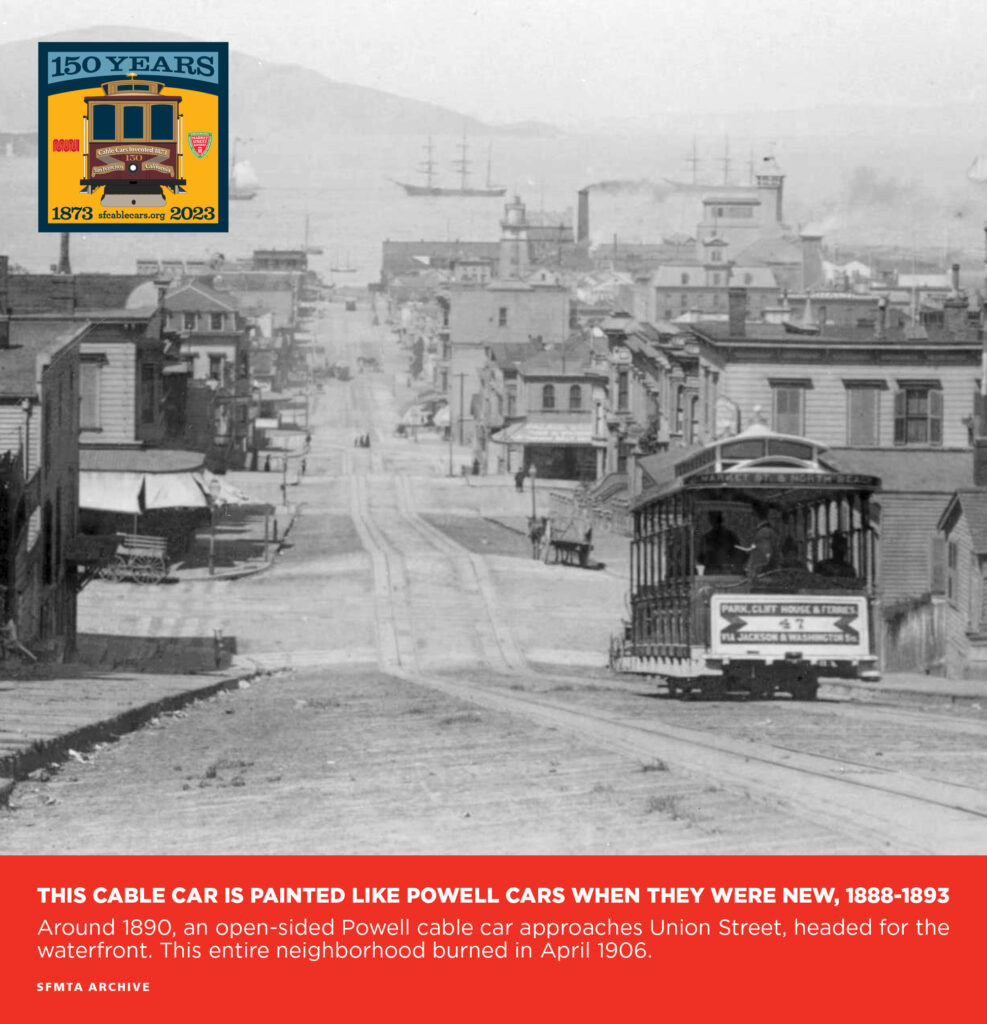
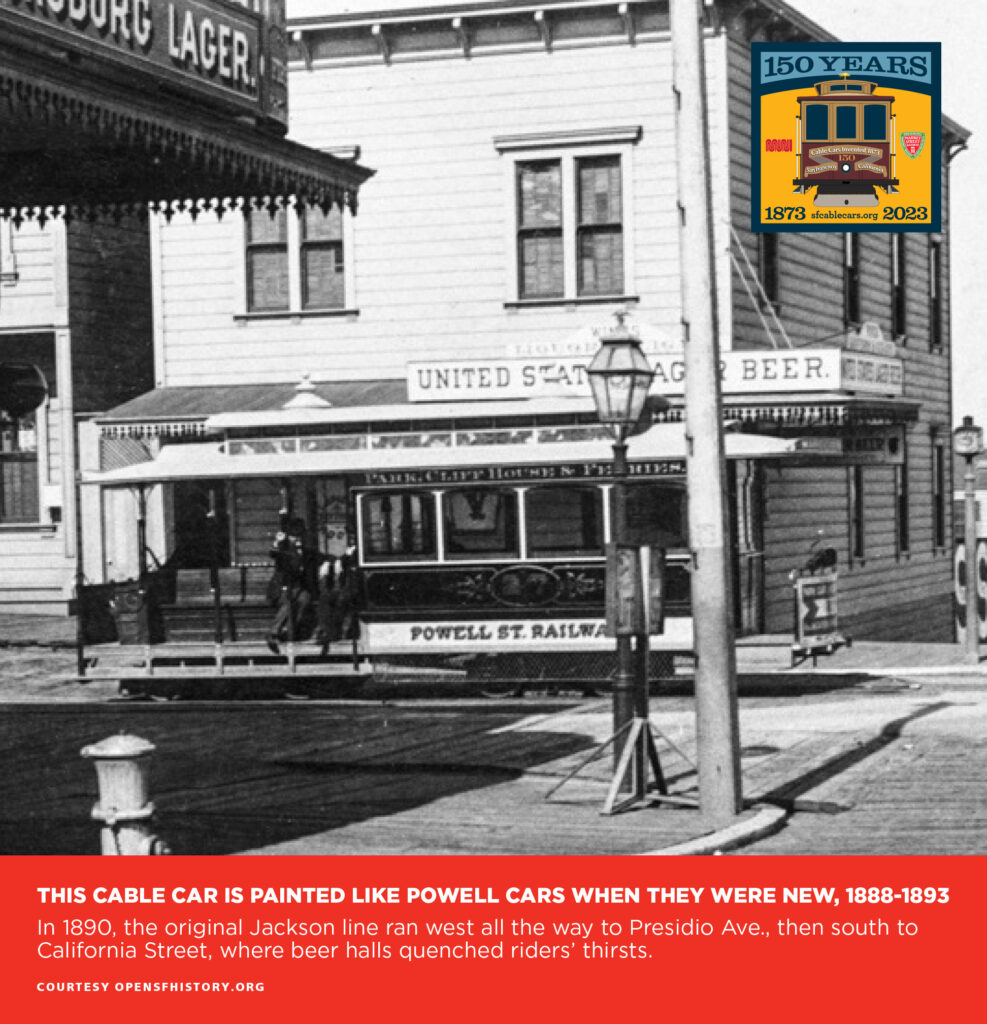
The 12 Powell cable cars painted in historic liveries already carry these panels, which are made of non-damaging perforated vinyl that does not block views from inside the car. Other cable cars on both the California and Powell lines will be receiving them soon.
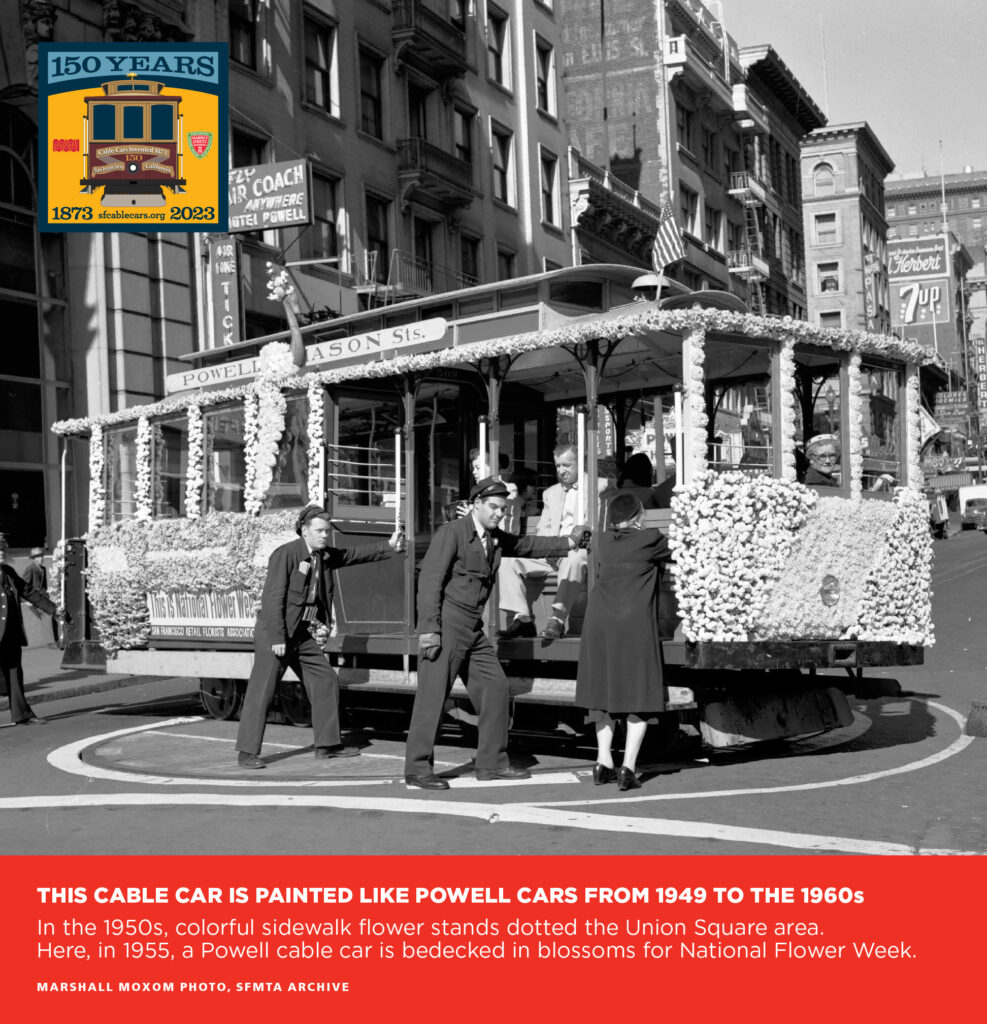
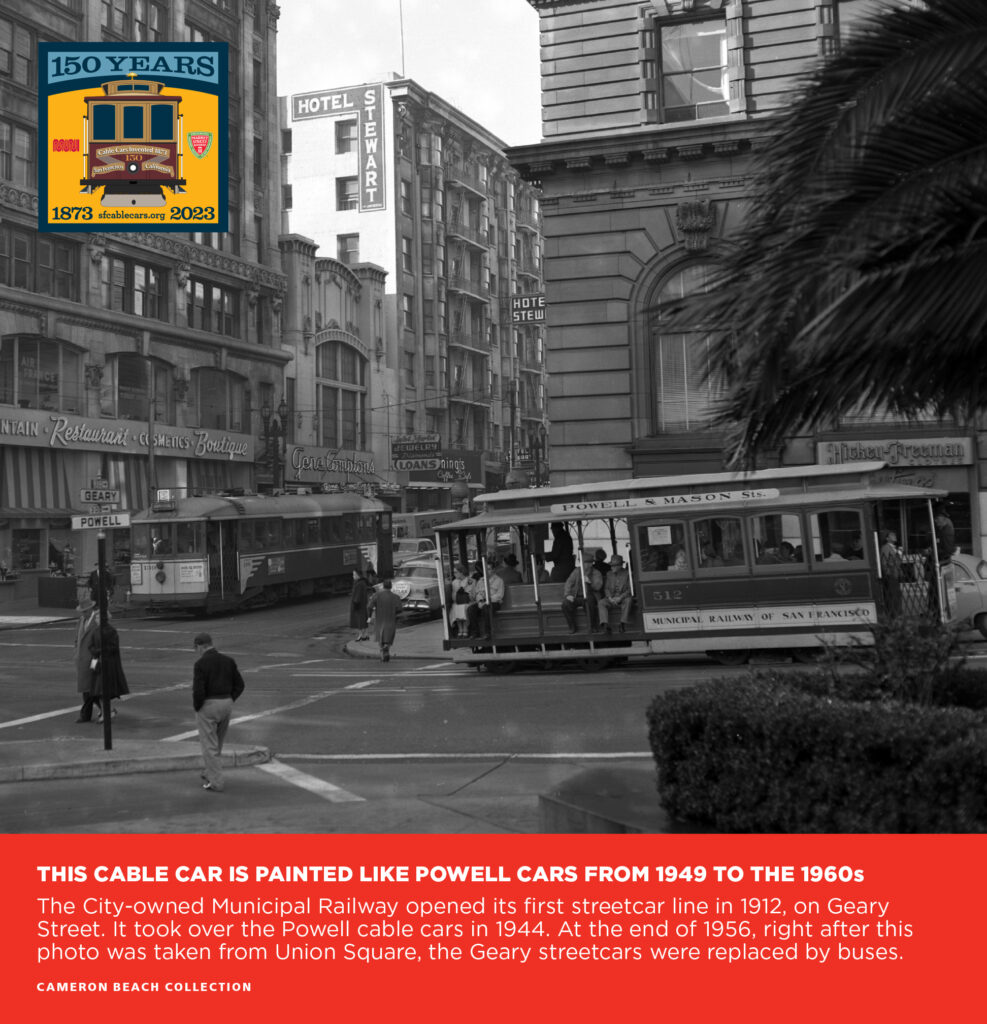
We thank David Gallagher, our board member, for suggesting many of the photos. We thank the SFMTA Archive, led by Jeremy Menzies, for many of the photos. It’s a wonderful resource you should check out. We also thank Bob Strachan, who curates our own archive, along with Emiliano Echeverria, Al Schwoerer, and Jack Tillmany for contributing photos. Special thanks to our devoted graphic designer, David Dugan, who designed not only these panels, but also the logo for the celebration, our publications, and so much more.
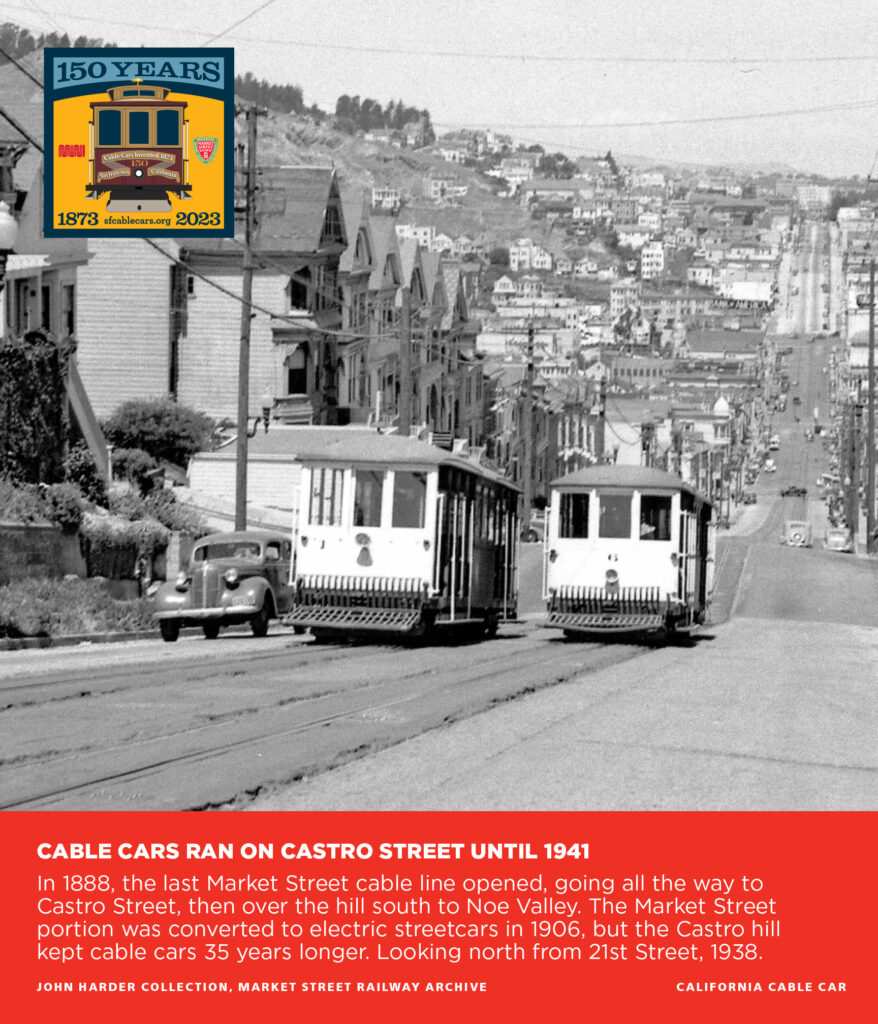
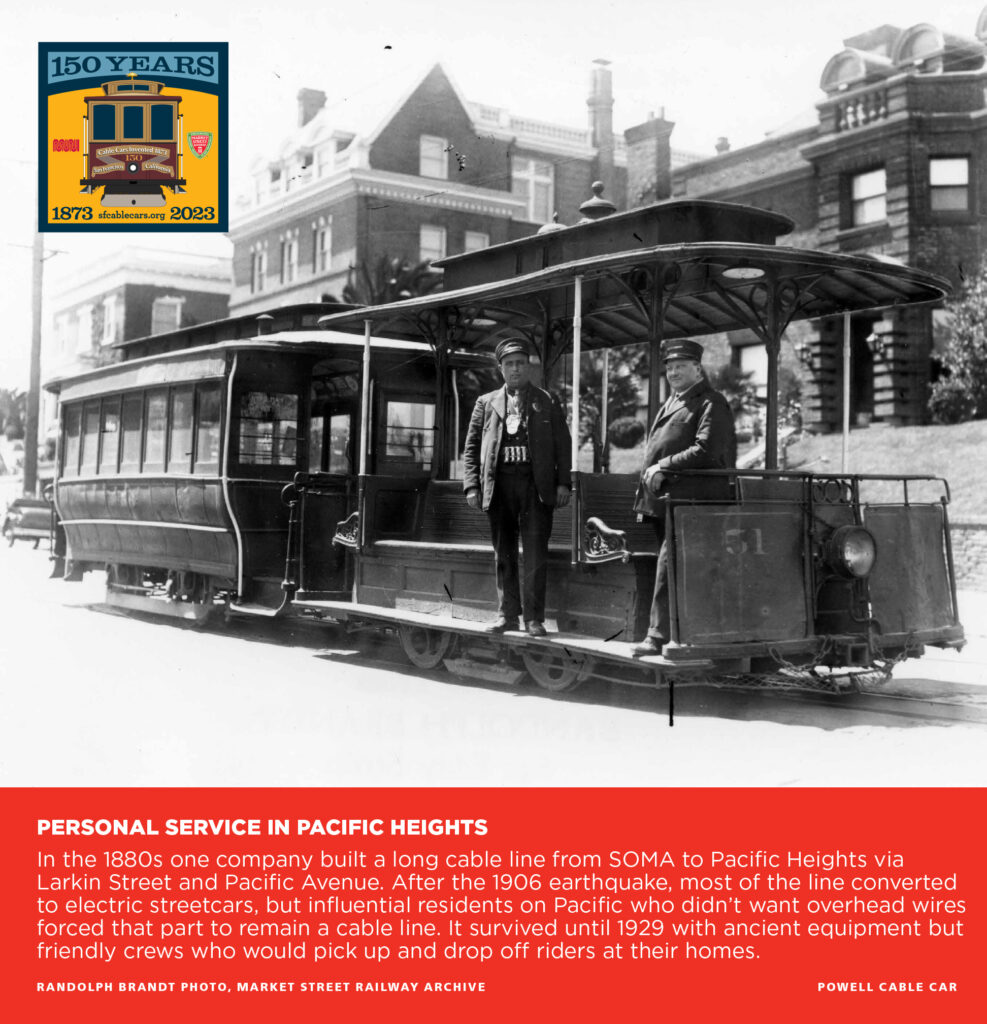
Enjoy these samples. (The small type in the lower right of the caption of the bottom photos is just a guide for the great cable car crew installing them, since Powell and California cars have slightly different window sizes.)
We’ll ultimately post the complete set. But first, we’d like to ask your help to print more. These cost $50 each to print, which is outside our normal budget. Please consider a donation to Market Street Railway to fund these historic panels, which we think will deepen the appreciation people have for our unique cable cars. Thanks. And enjoy the Museums in Motion this year, in person if you can, or virtually on our special celebration website.
I hope the celebration goes all over the world………
In Philadelphia, cable cars were open grip cars, towing one or two closed trailers, Many of the trailers were former horsecars. None of the cable lines had significantly steep hills; In fact, the steepest hill, Negley’s Hill in Germantown, had a stable at its foot. where helper horses were added for the grade. It was never cable. but went straight from horse to electric.